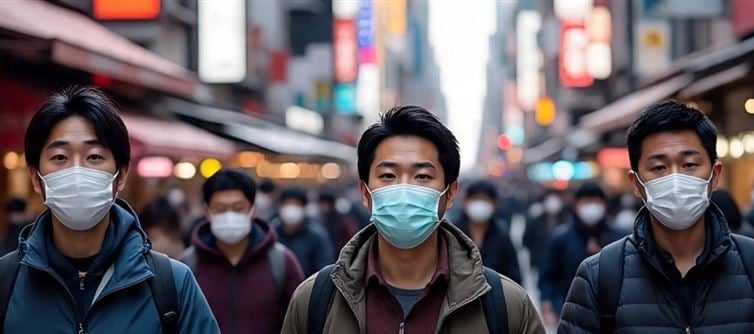
Just when the world thought pandemics were behind us, a fast-spreading influenza outbreak has thrown Asia into alarm. japan — known for its medical precision and public health discipline — has officially declared a nationwide influenza epidemic, five weeks earlier than expected. The virus is spreading like wildfire through schools, childcare centers, and hospitals, infecting thousands every single day.
india too is witnessing a worrying uptick in flu cases — especially the H3N2 strain, a direct descendant of the deadly 1968 hong kong Flu. The symptoms are deceptively mild at first — fever, sore throat, cough — but they are escalating rapidly into hospital-level illnesses.
The world is watching. Because this time, the virus isn’t just seasonal — it’s strategic.
🧬 1. JAPAN’S EARLY OUTBREAK SHOCKS health EXPERTS
Influenza usually peaks in japan between december and February. But this year, it’s already out of control — a full five weeks earlier than expected.
Between September 22 and 28, over 4,000 patients were reported with influenza — the highest early-season surge in two decades. The number jumped to 6,000+ in just one week, forcing Japan’s National Institute of Infectious Diseases to declare a national epidemic.
This is only the second time in 20 years that the flu has spread this fast, this early, and this widely.
🏫 2. japan SHUTS DOWN SCHOOLS AND DAYCARE CENTERS
The outbreak has hit children the hardest, leading to closures of 135 schools and childcare centers across the country. Many prefectures are reporting absentee rates high enough to warrant emergency shutdowns.
The flu’s epicenter? Okinawa, followed by major surges in Tokyo, Osaka, and Fukuoka.
What’s frightening doctors is not just the speed of infection — it’s how it’s jumping from kids to entire families in days, overwhelming pediatric wards and flu clinics.
🧠 3. WHAT MAKES THIS FLU DIFFERENT — THE SPEED, THE TIMING, THE SPREAD
Influenza viruses mutate rapidly, but this outbreak’s timing and scale have blindsided health authorities. Typically, early flu seasons indicate either:
A new or mutated strain,
Or a waning public immunity after years of reduced exposure post-COVID.
Doctors say the current flu wave has more severe fatigue and persistent fever, particularly among younger patients. Hospitals across japan are urging people to mask up again and avoid crowded indoor spaces — a chilling throwback to 2020.
4. india TOO IS SEEING A SURGE — H3N2 IS BACK
Meanwhile, india is reporting a rise in H3N2 cases, particularly in North India. This strain — a descendant of the 1968 hong kong Flu pandemic virus — is notorious for mutating quickly and causing prolonged illness.
States like Delhi, Haryana, and Uttar Pradesh have seen spikes in fever and respiratory infection cases since late September. Hospitals are urging citizens to get flu shots, as immunity levels against H3N2 are inconsistent across age groups.
Doctors have warned: “This year’s flu isn’t just seasonal — it’s opportunistic.”
🌡️ 5. THE SYMPTOMS TO watch OUT FOR
The outbreak is primarily hitting children and working-age adults with the following symptoms:
Sudden high fever (102°F and above)
Severe cough and throat irritation
Body pain and weakness lasting beyond 4–5 days
In some cases, shortness of breath or dehydration
What begins as a mild fever quickly turns into full-blown respiratory distress — pushing hospital admissions upward every day.
🚨 6. WHY EXPERTS ARE WORRIED — “PANDEMIC FATIGUE” IS LOWERING DEFENSES
After years of COVID protocols, populations across Asia have dropped their guard. Mask fatigue, low flu vaccine uptake, and complacency are giving the virus a free runway.
Experts fear that if the strain mutates further — or coincides with rising dengue and COVID subvariants — healthcare systems may once again face unbearable stress.
💥 CONCLUSION: THE SILENT PANIC IS BACK
The influenza wave sweeping japan and creeping into india isn’t just a health concern — it’s a wake-up call. The virus may be old, but our guard is new — and dangerously low.
A nation like japan declaring a flu epidemic should make the world sit up. Because when the most prepared country in Asia falls first, it’s not just a regional problem — it’s a global signal.
We’re not in 2020 anymore, but the virus never got the memo.




 click and follow Indiaherald WhatsApp channel
click and follow Indiaherald WhatsApp channel